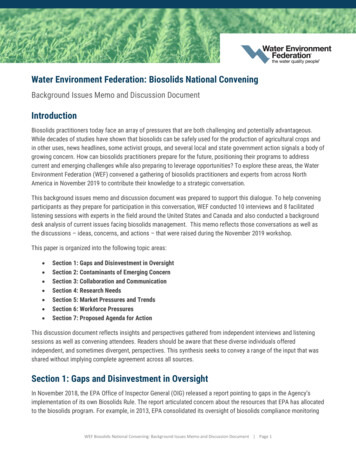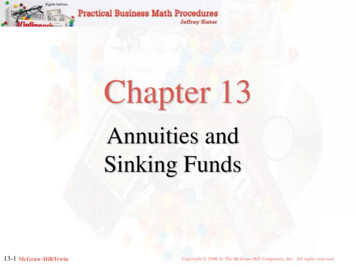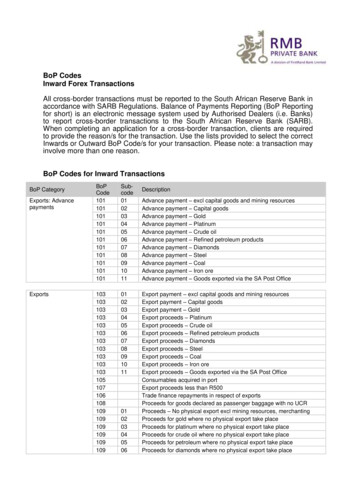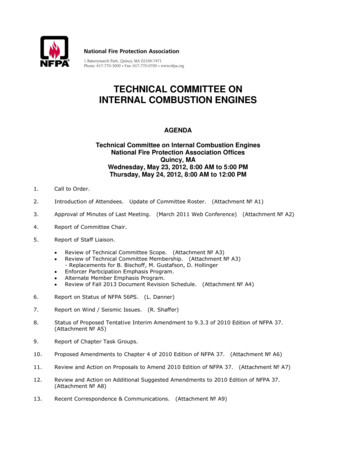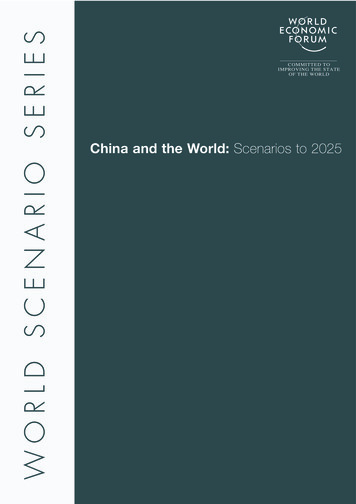
Transcription
WORLD SCENARIO SERIESCOMMITTED TOIMPROVING THE STATEOF THE WORLDChina and the World: Scenarios to 2025
The views expressed in this publication do notnecessarily reflect the views of the World EconomicForum.World Economic Forum91-93 route de la CapiteCH-1223 Cologny/GenevaSwitzerlandTel.: 41 (0)22 869 1212Fax: 41 (0)22 786 2744E-mail: contact@weforum.orgwww.weforum.org 2006 World Economic ForumAll rights reserved.No part of this publication may be reproduced or transmitted inany form or by any means, including photocopying and recording,or by any information storage and retrieval system.
ContentsSection 1. Preface2Section 2. Executive Summary5Section 3. Regional Ties11Section 4. Unfulfilled Promise27Section 5. New Silk Road43Section 6. Comparing the Three Scenarios57Section 7. Conclusion65Annex : Recommended Reading68Acknowledgements70Project Team Members72
Section 1: PrefaceSectionChina and the World: Scenarios to 20251PrefaceWith one of the fastest growing economiesFor a country as diverse as China, no single setin the world, China is taking on increasedof scenarios can claim to describe all possiblestrategic importance as an emerging globalfutures. Each story that has emerged describesplayer. At the same time, the country facesa different, plausible future for China. They arecomplex economic, political, social andnot predictions but possibilities, and intend toenvironmental challenges, and stakeholdersprovoke readers, challenging their assumptionsin China must be prepared for a variety ofabout what may happen and providing a usefuldifferent futures.shared basis for discussion.To gain a better understanding of thepossible outcomes, along with the key trendsHow will these Scenarios be used ?and events that might shape them over theLeading global companies often engage innext 20 years, the World Economic Forum setconstructing large-scale scenarios to helpout to develop scenarios on the future of China.formulate their business and investmentThe resulting scenarios are the creation ofall who took part in the project—they go beyondstrategies. In particular, scenarios can : Enhance a strategy's robustness bythe assumptions and perspectives held by anyidentifying and challenging underlyingindividual, interest group or organization.assumptions, hence contributing to strongand pre-emptive corporate positioning ;What are Scenarios ? Scenarios are stories about the future.discovering and framing uncertainties andGood scenarios are plausible, challenging andenhanced understanding of risks, prior torigorously constructed to address the most criticalmaking substantial, irreversiblequestions that decision-makers need to face.commitments ;The scenarios presented in this publication were Raise awareness of the environmentdeveloped over a period of ten months atby helping business communities understandworkshops in Singapore, WWashington, London,the complex interplay of underlying driversShanghai and Beijing. They synthesize theand critical uncertainties, and increasingperspectives of senior executives from leadingsensitivity to weak signals that precede aglobal companies, as well as thought leaders,significant change in direction;scenario practitioners and public figures, both within Provide impetus for action by providingusers with common languages and conceptsand outside China.for discussing strategies across variousTogether, these people identified two criticalquestions:businesses in the non-threatening context of possible futures ;Can China implement internal reformsto further its development? Increase response speed toHow will China’s relationship with theunexpected events by visualizingrest of the world affect its developmentpossible futures and rehearsing responsesand shape the global context?mentally, thereby raising the state ofSupporting analysis from multiple disciplinesincluding economics, social sciences, geopolitics2Allow better strategic decisions byand environmental studies has added furtherinsights.preparedness and agility.
China and the World: Scenarios to 2025who take part will disseminate these discussions to otherorganization committed to improving the state of the worldpublic forums around the world. Additionally, our industryby engaging leaders in partnerships to shape global, regionalcommunities may delve deeper into this analysis andand industry agendas. The Forum is impartial, not for-profitdraw industry-specific implications.and is tied to no political, partisan or national interest.We hope these scenarios will spur action. The decisionsIn pursuit of our mission, we work closely with ourwe make today create tomorrow—and these scenariosmembers, leaders from academia, government, religion,raise crucial questions about the strategic decisions that willthe media, non-governmental organizations and the arts.shape the future of China.As such, the Forum is ideally positioned to convene theSection 1: PrefaceThe World Economic Forum is an independent internationalWe also hope the scenarios will be used widely withinhigh-level, international and diverse group of individualsand outside China, encouraging people from diversenecessary for forming robust scenarios. The Forum intendsbackgrounds to engage in a productive discussion of theirto use these scenarios to communicate a sharedshared vision of the future, helping them to identify risks andunderstanding of China and initiate dialogue and actionopportunities and to develop more robust strategies.internationally.Through interactive sessions at various conferences andworkshops held throughout the year, including the AnnualMeeting in Davos, member firms will be able to discuss thedevelopment of their “China strategies” and communicateGed Davistheir aspirations, as well as their concerns for China’sManaging Directordevelopment, directly with key decision-makers. The mediaWorld Economic Forum3
Section2Executive SummaryUnfulfilledPromiseNew SilkRoadRegionalTies
Section 2: Executive SummarySectionChina and the World: Scenarios to 20252Executive SummaryChina’s economic development over the pastA number of factors will influence how thesetwo decades has surprised both her critics andquestions are answered in the next twosupporters. Since 1978 when China launcheddecades :its “Four Modernizations” reform process under The intent of China’s leadership and itsthe leadership of Deng Xiaoping, growth hasability to sustain the implementation ofaveraged 9.5 % annually. As a result, China hasdecisions made ;climbed in world rankings to become the sixth The economic policy choices made,largest economy in terms of nominal grossincluding the degree of liberalization anddomestic product.openness ;Thus in the last few years China has The extent to which social stability can bebecome the focus of much attention. Somemaintained and popular expectationsparts of business, academia, government andmanaged ;civil society are more highly engaged in China The reaction of other global actors tothan ever before. All need to think about whatChina’s rise, and the broader geopoliticalcould happen next. But China’s future is notsituation.merely of interest for experts. China’s impact onglobal growth, resource allocation, trade andBased on these factors and core questions,investment, as well as geopolitical balance hasthree scenarios emerge for “China and thedirect consequences for every part of the planet.World” over the next 20 years. The differentpaths for China through to 2025 areKey Questions for the ScenariosWhen looking at the future of China, two corequestions stand out : Can China implement internalreforms to further its development ? How will China’s relationship withthe rest of the world affect itsdevelopment and shape the globalcontext ?6represented in figure 2.1.
China and the World: Scenarios to 2025Section 2: Executive SummaryFigure 2.1China and the World: Scenarios to 2025INCLUSIVE GLOBAL ENVIRONMENTUnfulfilledPromiseEFFECTIVE INSTITUTIONAL REFORMSDISCRIMINATIVE GLOBAL ENVIRONMENTINEFFECTIVE INSTITUTIONAL REFORMSNew SilkRoadRegionalTiesRegional Ties is a story that plays out inby security concerns. New Silk Roada global environment where trade is hindereddescribes a China which is well on its way toby protectionism. China increasingly turns toachieving balanced development. This successthe Asian region to provide the motor for itsis driven by strong and inclusive globaltrade and investment and to support it on aeconomic growth, with an emphasis onpath of reform and economic development.trade integration and cross-border flows.In Unfulfilled Promise, China struggles toIt is backed up in China by well executedimplement tough reforms. This has negativefinancial, legal and administrative reforms,consequences for its economic, social andand the progressive emergence of a middleecological development. There is continuedclass and internal market.economic integration globally, but it is tempered7
Regional TiesRegional Ties describes how China continues on the path ofreform despite an international environment that becomesincreasingly difficult. Chinese leadership and vision facilitateChina and the World: Scenarios to 2025the forging of regional ties that help overcome historicalenmities and restore prosperity in Asia.The scenario is written as a Government White Paper, reflectingon 20 years of progress in China, a medium often used by theChinese government to communicate to the public-at-large ona major issue, to lay out its policy or to reflect on the past.Section 2: Executive SummaryUnfulfilledPromiseUnfulfilled Promise describes a China where the desire foreconomic development is not supported by the necessarystructural reforms. The name reflects the general sentimentamong the Chinese people that the promise made to them interms of inclusive economic development has been largelyunfulfilled.The story is told as an article in a Western online journal andreviews China’s development over the period 2006-2025.New Silk RoadNew Silk Road describes the flourishing economic andcultural rise of China, a feat achieved despite the presenceof substantial internal obstacles. The scenario reflectsChina’s peaceful geopolitical integration and its sizeable rolein the exchange of goods, services, investments and ideas.In this way it recreates the original Silk Road.The scenario is told using the Online Encyclopaedia of theWorld and provides a factual account of what China hasachieved over a 20-year period.8
2006-2010: Governments in Europe and North America,neighbours in Asia. Formalization of these regionalsuffering from growing economic demands and domesticrelationships leads to the establishment of an Asianpressures, eye China’s impressive economic growth and itsEconomic Region, allowing the free movement of goods,emergence as an increasingly significant actor on the worldcapital and labour.behaviour surfaces, blocking attempts by Chinese corporations2021-2025 : Despite a relatively depressed global economicto invest and trade and restricting the free flow of technologyoutlook, China succeeds in maintaining social cohesion andand ideas.sustaining economic development by building on its regionalties. A multi-polar world emerges with China guiding an2011-2020: As the global economy slows, severalAsian sphere of influence.multinational corporations sell their manufacturingChina and the World: Scenarios to 2025stage with increasing concern. A pattern of protectionistoperations in China. When exports weaken so does growth,Section 2: Executive Summarycreating social discontent. The Chinese government reactsby creating social safety nets, focusing on the developmentof its domestic market and improving its relationships with2006-2010: Transition towards a free market economy2021-2025 : The negative economic and social trendscontinues, but the central government is reluctant to pushbecome apparent both within and outside of China.through too much change for fear of social unrest. In someThe central government seeks to tighten control, worseningcases, faced with powerful local vested interests andthe economic situation, in part, as it puts limits on some ofprevailing corruption of local authorities, it is also unable tothe remaining entrepreneurs and initiatives. Nevertheless,enforce reforms. This undermines the country’s economicthere are signs of change. Richer provinces try to implementgrowth.their own reforms, and Beijing is determined to try againwith its own projects. But is this too little, too late ?2011-2020: Global trade and economic integration areshaped by security concerns that hinder knowledge sharing,innovation and labour and capital mobility. China’s internationalcompetitiveness gradually falls and levels of foreign investmentdrop significantly as intellectual property protection andenforcement remain inadequate and innovation is limited.By 2020, China’s economic growth slows significantly,accentuating social unrest.2006-2010: The focus remains on expanding exports,domestic reforms and a growing middle class provide theattracting foreign investment and creating jobs to managebuilding blocks to develop the Chinese market. This allowsthe rural-urban transition. The Chinese government is notfor a measure of social security and resource redistributiondistracted by fear of unrest and resolutely stays on the pathwithin the country.of reform. Problems concerning state-owned enterprises(SOEs), the banking sector, the environment and rule of law2021-2025 : A growing appetite for political freedomare all addressed. Moreover, Beijing undertakes directemerges as media controls diminish, individual rights andpublic consultation as a means of legitimizing its initiativescivil liberties improve and the separation of the judicial,and disciplining recalcitrant local barons.legislative and executive branches is openly discussed.Some challenges remain as average incomes are still below2011-2020: China actively engages with the world.those of developed countries and the problems related toIt plays a constructive role by helping with peacekeeping,an ageing population need addressing. However, it is clearseeking to reduce the dangers of conflict in Asia, and eventhat by 2025 China is on its way to achieving balancedtaking important steps with the international communitydevelopment and sustained high growth, and is a respectedto improve climate security and reduce the globalglobal actor.environmental footprint of energy use. At the same time,9
China and the World: Scenarios to 2025UnfulfilledPromiseNew SilkRoadSection 2: Executive SummaryRegionalTiesComparing the Three ScenariosThe table below provides a comparison of some of the most important aspects of the scenariosRegional TiesUnfulfilled PromiseNew Silk RoadLeadership & governance Strong one-party leadership Strategic vision helps toweather the economic crisis Reactive leadership—lacking in long-term vision Fear of dissent within theranks hinders local reformenforcement Next generation leadershipmore open to individualrights and social liberties Foundations are laid for theseparation of judicial,legislative and executivepowersEconomic performance Global slowdown affectsexports to Europe and NorthAmerica, triggering a focuson domestic and Asianmarkets Growth eventually slows asexport weakens anddomestic market demanddoes not significally increase Balanced growth based onboth external and domesticmarket development High growth continuesSocial development China succeeds inmaintaining social stabilityand cohesion despite adepressed globalenvironment Emphasis is placed onsocial inclusion and thedevelopment of socialsystems Unbalanced developmentdriven by coastal areas High disparities acrossregions and classes Reforms of SOEs andaccelerated urbanisationcombined with aninsufficient social safety netcause some initial concerns Inequality is tackled inearnest as of 2015External relationships Successful regional ties fuelgrowth and prosperity in theregion after the Westerncountries shift attentionaway from the region Aspiration to be a majorglobal player not fulfilled Lagging reforms affectrelations and trade China plays an increasinglyactive role on the worldstage and in internationalorganisationsExploring the Future of China and the WorldDetailed economic analysis underpins the three scenarios. Boxes on selected topics provide additionalsupporting analysis. Wild Cards (events that would have a large impact, but have only a very lowprobability of actually happening) are discussed in the concluding section in order to stimulate thereader’s thinking. They are not, however, the focus of our scenarios.We now invite you to turn the pages, travel through time, and see for yourself what the future of10“China and the World” may be in the next 20 years.
Section3Regional Ties
SectionChina and the World: Scenarios to 2025ScenarioSection 3: Scenario Regional Ties3Regional TiesChina : Twenty Years of ProgressContentPrefacePart One : Growing Global Pressure : 2006-2010I. Global ChallengesII. China Seeks Global HarmonyPart Two : Building Principles for Regional Harmony : 2011-2020I. An Economic Setback for the People’s Republic of ChinaII. Tensions in AsiaIII. Chinese Economic Development ReorientedIV. Asian Potential UnderstoodV. Deepening Relations in the Asian RegionPart Three : Consolidating Achievements for the Future : 2021-2025Information Office of the State Councilof the People’s Republic of ChinaJuly 2025, Beijing12
China and the World: Scenarios to 2025The world has faced many challenges in the last twenty years and the economic climate has notalways been favorable. China, holding high the banners of peace, development and cooperation,continues as a resolute force for safeguarding peace and promoting common development,Section 3: Scenario Regional TiesPrefaceespecially improving ties among Asian countries. The Chinese government appreciates theimportance that many countries, particularly in Asia, attach to developing relations with China.Chinese civilization has a long and influential history. Over the past several thousand years, Chineseculture has exerted a profound influence on the progress of humanity. Vast numbers of Chinesethinkers, scientists, inventors, writers and artists have made great contributions to the developmentof the planet’s common civilization.The Chinese government and people are committed to continuing and expanding theseachievements. In 1978, China gradually stepped onto the road towards establishing a socialistmarket economy system. Entering the 21st century, it embarked on a new development stage,starting the full-scale construction of a modern and harmonious society by pursuing its policyof reform, opening up and nation building.“China : Twenty Years of Progress” aims to elaborate on the Chinese government's achievementsin developing the country in a well-rounded way. It outlines areas and plans for cooperation andrelated measures so as to enhance regional Asian collaboration and promote long-term and stableregional development. To help the international community gain a better understanding of theeconomic, social and international progress that China has made, we present this systematic accountof developments over the years 2006-2025.13
China and the World: Scenarios to 2025Section 3: Scenario Regional TiesPart One : Growing Global Pressure : 2006-2010I. Global ChallengesTwenty years ago, the People’s Republic of China had already made impressive advances, notleast a long period of considerable economic growth. The global community recognized these greatstrides forward and consequently the International Olympic Committee chose Beijing for the 2008Olympic Games and Shanghai hosted the World Expo in 2010.Nevertheless, the Chinese government and people knew that much still had to be done.The arduous task of modernization called for prolonged and persistent hard work, and theyrecognized the importance of a peaceful, flourishing international environment for their own country.Although the international situation appeared to be stable, there were profound, complex anddisturbing changes taking place.Perhaps the most significant changes were in the global distribution of economic activity. The Chinesepeople, along with those in other rapidly growing economies, were taking an ever larger share ofthe world’s manufacturing and low-end service provisions. In time, this would have been hugelybeneficial for people everywhere, as it would have meant more efficientlyfproduced and affordableproducts and services. But getting there implied a period of turmoil, as those who had previouslyperformed these functions had to search for new areas of specialization. As the Chinese peoplewell know, making such changes can be very challenging.With favorable circumstances, this would have been a relatively brief period of adjustment. Whatshould have been a series of straightforward steps became a vicious circle from which Europeanand North American countries were unable to extricate themselves. Part of the problem was theuncertain nature of the global environment, beset by persistent threats to national and internationalsecurity. These dangers were both traditional and non-traditional and included conflicts, the riseof terrorism, drug and people trafficking, and the spread of infectious diseases.Instead of working together to tackle these challenges and evolving towards a common approach,countries tended to focus on their individual plans and were suspicious of other nations withdifferent cultures and methods. In such an environment, harmonious relations between countrieswere hard to achieve.With China’s support international groups continued to meet, but discussions were inconclusiveat best. They tended to focus on individual threats, rather than seeking out potential opportunitiesfor shared projects. To the regret of the Chinese government, the World Trade Organization suffereda series of setbacks, with talks on liberalization stalling. This was a serious blow to the global effortto improve welfare for all.14II. China Seeks Global HarmonyFaced with these developments China could not remain impassive. In 2008 it : Sought to reinvigorate the World Trade Organization (WTO) by building a common positionwith like-minded trading nations in Asia, using the vehicle of ASEAN 3. Although the WTOremained moribund, the initiative showed how Asia's common interests could be identified andpromoted with China’s support ; Managed, together with the Republic of Korea (ROK), to broker a successful agreement withthe Democratic People’s Republic of Korea to stop its nuclear program.
China and the World: Scenarios to 2025Section 3: Scenario Regional TiesIncreasingly, governments and people in Asia perceived that nations work best with those thatare close physically and culturally.In addition, other global economic actors were struggling with their own problems : In Europe, governments were confronted with ageing populations, rising unemployment andinflexible labor markets ; In the United States, the issues were mounting trade and budget deficits. As the countrygrappled with these challenges, the economy slowed and unemployment rose.It was with regret that the Chinese government noted a persistent increase in the number ofprotectionist measures from the European Union and the United States, as both gave in topopulist pressures playing on fears of job losses. Initial restrictions in Chinese textile exports wereextended to shoes, steel pipes, automotive parts, electronics and automobiles. There was anescalation in disputes concerning intellectual property rights. The Chinese government made greatefforts to enforce intellectual property regulations, but still the European Union and the UnitedStates used legal pretexts to introduce “retaliatory” measures against Chinese imports.Starting in 2008 a pattern of discrimination against China emerged. Measures included : Intensified pressure for further appreciation of the renminbi ; Growing barriers against imports from China ; Regular objections to Chinese investments in North American and European companies; Regulations against the sharing of technological or commercial expertise ; Fewer Chinese students granted visas or accepted into North American and Europeanuniversities and institutions.With the regrettable decline of the World Trade Organization as a forum for resolving trade disputes,there was greater recourse to bilateral treaties. Both complex and restrictive, these treaties cloggedwhat had been relatively free flows of labor, capital and knowledge in the name of security and theneed to maintain self-sufficiency.Figure 3.1China’s Exports to NAFTA and the EUChina's Merchandise Exports to NAFTA and the EUGrowth p.a. (left) and Share in China's Total Exports(right)Share5045404030Percentage ShareGrowthPercentage GrowthGiven the unfriendliness of the externalenvironment, the Chinese governmentfelt that it must proceed with internal reformsat a cautious pace.3520301025020-102004200620082010Source: Moody’s Economy.com15
China and the World: Scenarios to 2025Section 3: Scenario Regional TiesPart Two : Building Principles for Regional Harmony : 2011-2020I. An Economic Setback for the People’s Republic of ChinaThe deteriorating international environment had a number of economic consequences for theChinese people. Export growth slowed between 2008 and 2012 and foreign direct investment decreased in2011 and 2012. Fewer manufacturing plants were built as many investors had only beeninterested in using China as a base for exports. Indeed, for the first time in 30 years, someforeign-owned firms even divested their share of manufacturing operations, in particularthose that made products for export. Existing jobs were lost while far fewer new jobs were created, causing anxiety for the peopleof China. It was not a surprise when, as unemployment grew, a large number of massincidents occurred.Figure 3.2Foreign Investors Pulled Out as Export Opportunities WorsenedExports and Foreign Direct Investment Inflows - Growth p.a.PercentagesExportsForeign Direct Investment1612840-420082009201020112012Source: Moody’s Economy.comThe Chinese government understood this turn of events: employment has a vital bearing on people'swelfare—it is the fundamental prerequisite for people to improve their lives. The Government’s 2011White Paper called “China’s New Employment Situation and Policies” (Information Office of theState Council of the People’s Republic of China, Beijing) recognized that to solve the employmentproblem in China, the most populous country in the world, would be “a strenuous, arduous andpressing task”. To give a measure of the problem, China’s growth rate dropped to 6 % in 2012 andurban unemployment rose to over 6%, making the slowdown the biggest economic challenge facedsince the beginning of the 1990s.Adhering to its principle of “putting people first”, the Chinese government swiftly set up temporarysocial security measures for as many of its people as possible, placing priority on ensuring accessto shelter, food and work. This was a difficultfsituation : although the Chinese government hadalways attached great importance and devoted every effort to establishing and improving thesocial security system, the country was not yet sufficiently developed to support all these demands.16Fewer exports and higher unemployment were only the beginning. In this more constrainedinternational environment, trust between countries was harder to earn or did not happen at all.Foreign investment flowed less freely. Trade between countries was becoming increasingly difficult.
China and the World: Scenarios to 2025Section 3: Scenario Regional TiesIn addition to the internal challenges, the Chinese government was very concerned with increasingtensions in Asia. Japan had decided to expand its military role. The modification of the pacifist wording of theJapanese Constitution, allowing its armed forces to take part in military operations abroad,roused understandable anxiety with the people of China. Despite the “one China” rhetoric used by the United States, their continued sales of arms toTaiwan undermined attempts by the government of China to settle the dispute with this province.The Chinese government could sense an incipient crisis and took decisive action to forestallthe problems. Beyond immediate safeguard measures, the government was determined tochange the focus of its development strategy by : Concentrating on forging new and strengthening old relationships with its neighbors, especiallyon trade and security issues ; Ensuring that its plans for economic development did not rely as much on exports and foreigninvestment, but were built on a broader basis—the government was determined to developdomestic demand more rapidly than previously planned.Other Asian countries had reached similar conclusions and were interested in further exploringthe idea of regional partnership. Given the global security risks and the ways in which internationalrelations were evolving, countries and their governments increasingly recognized the importance ofshared values and worldviews as a basis for forming economic and political relationships.This process was not easy and required considerable foresight. Consider the disintegrative forcesthat were at work at this time : the tremendous mistrust, in particular towards Japan ; the cripplingdisagreement over the question of which country might end up leading the regional bloc; the disputesover territory and access to energy resources.Intra-regional trade was already high, prompting some to ask if there was a need for furtherintegration. Other observers just could not see how countries which were so different in size,stage of development, political regimes, and that had no history of joint institutions could evercome together.III. Chinese Economic Development ReorientedIn parallel to the regional considerations, the Chinese government was very a
(SOEs), the banking sector, the environment and rule of law are all addressed. Moreover, Beijing undertakes direct public consultation as a means of legitimizing its initiatives and disciplining recalcitrant local barons. 2011-2020: China actively engages with the world. It plays a constructive role by helping with peacekeeping,
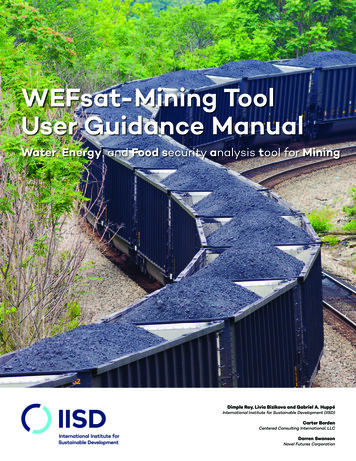

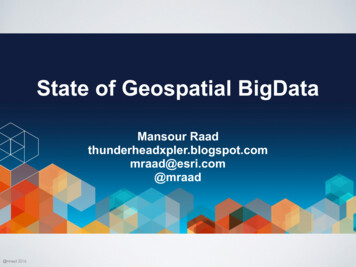
![NIAS EN COLOMBIA - Normas de Aseguramiento [Modo de compatibilidad]](/img/18/nias-en-colombia-normas-de-aseguramiento.jpg)


